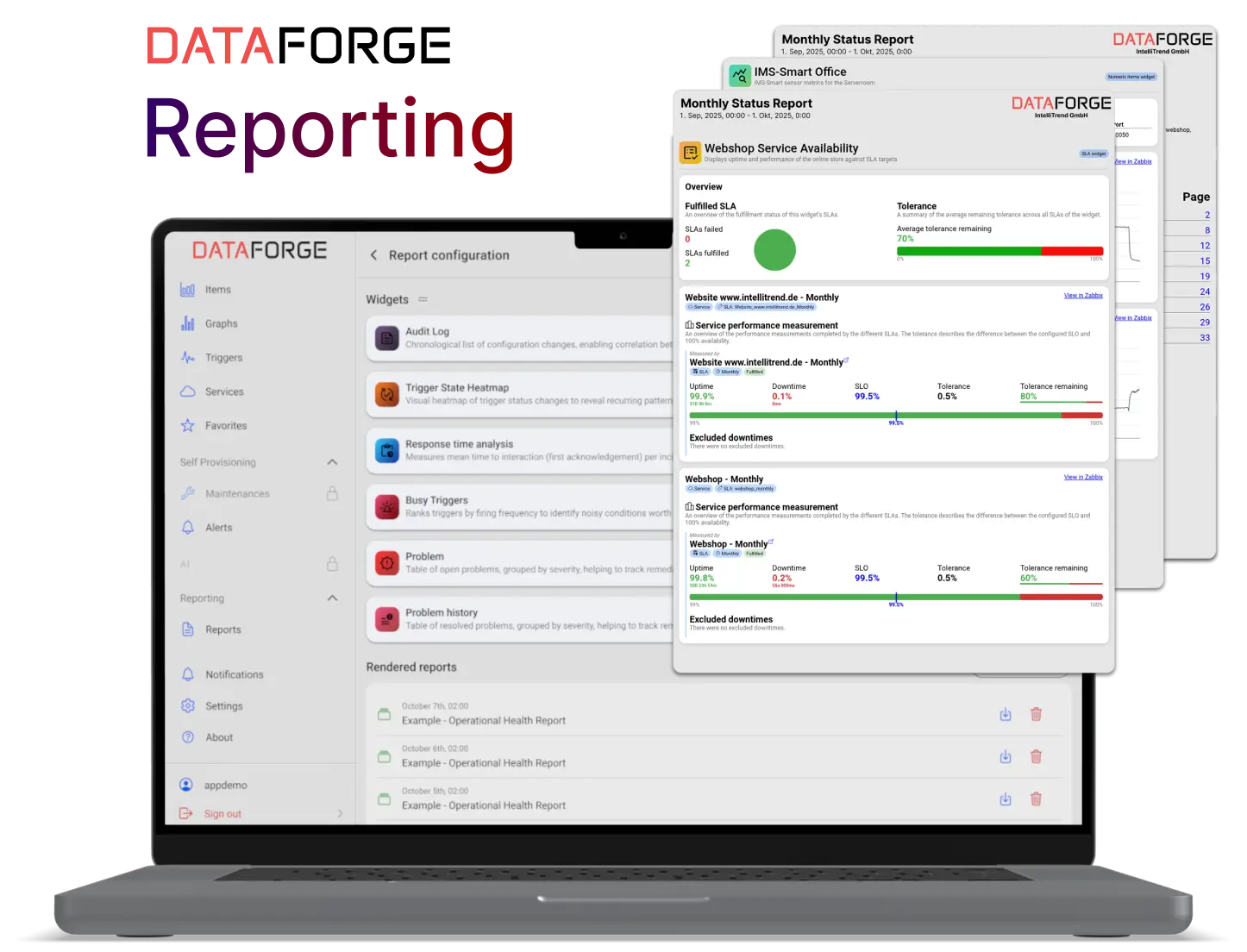
Configuration of automated scheduled reports
Reporting
With DataForge you can schedule custom reports to be generated automatically with data from your Zabbix server.
You can, for example, receive periodic PDF reports via email, or create reports in machine-readable formats to allow further processing with external software.
- Easily configure reports in your web browser
- Access a clear overview of your report jobs and any potential problems
- Insightful report widgets
- Optional table of contents with jump marks
- Supports various output formats (PDF, CSV, JSON, XML)
- Versatile report delivery / export options (email, S3, SCP, Kafka)
DataForge features
DataForge documentation
Open documentationInnovativ and customizable
Build reports that fit your needs
Explore many powerful widgets and build reports that fit your needs – easy and without an in-depth technical understanding.
- Numeric & Text items widgets
- Open & resolved problem widgets
- Long problem widget
- Busy triggers widget
- Mean time to recovery widget
- Mean time to interaction widget
- SLA widget
- Alert log widget
- and many more
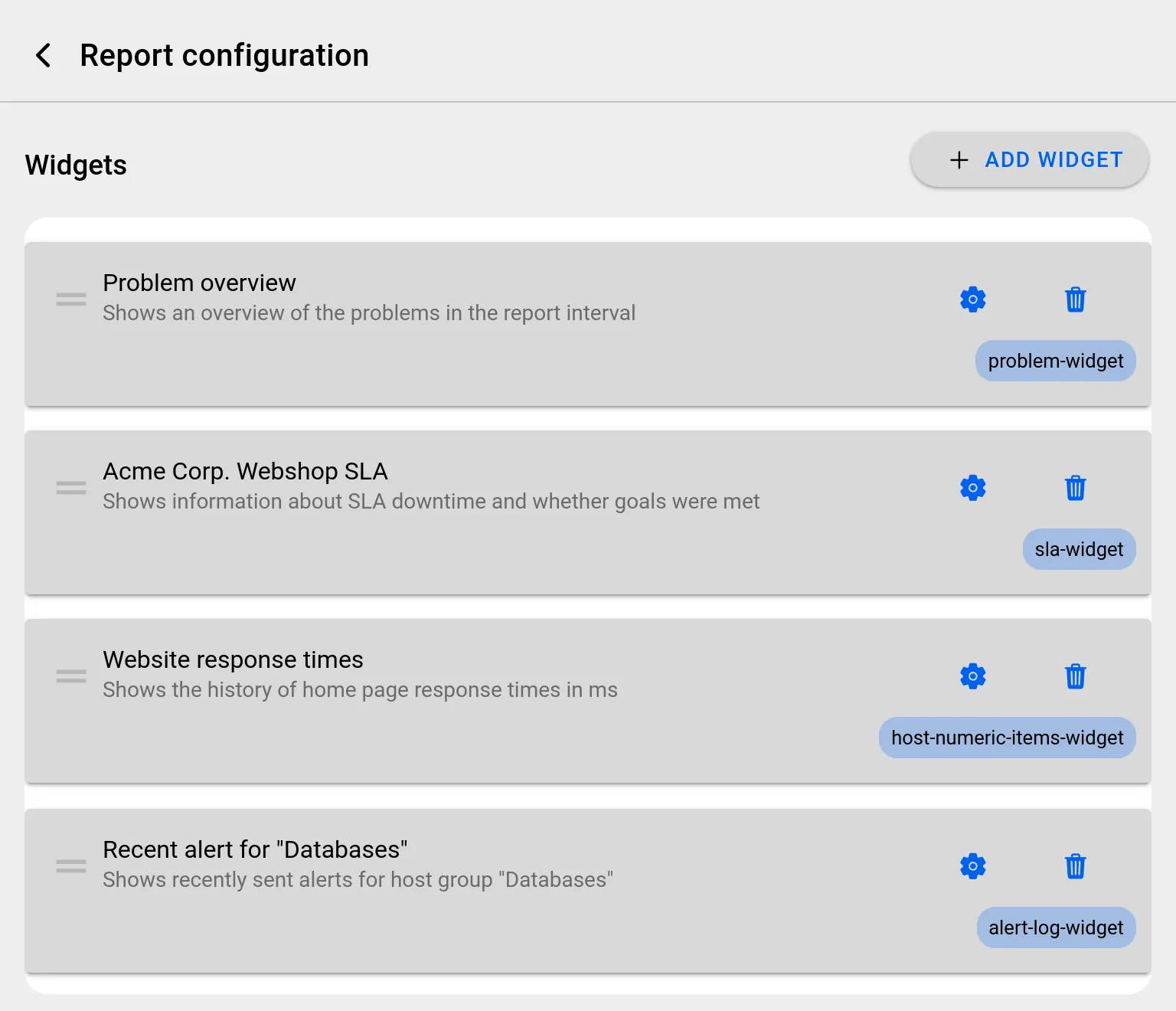
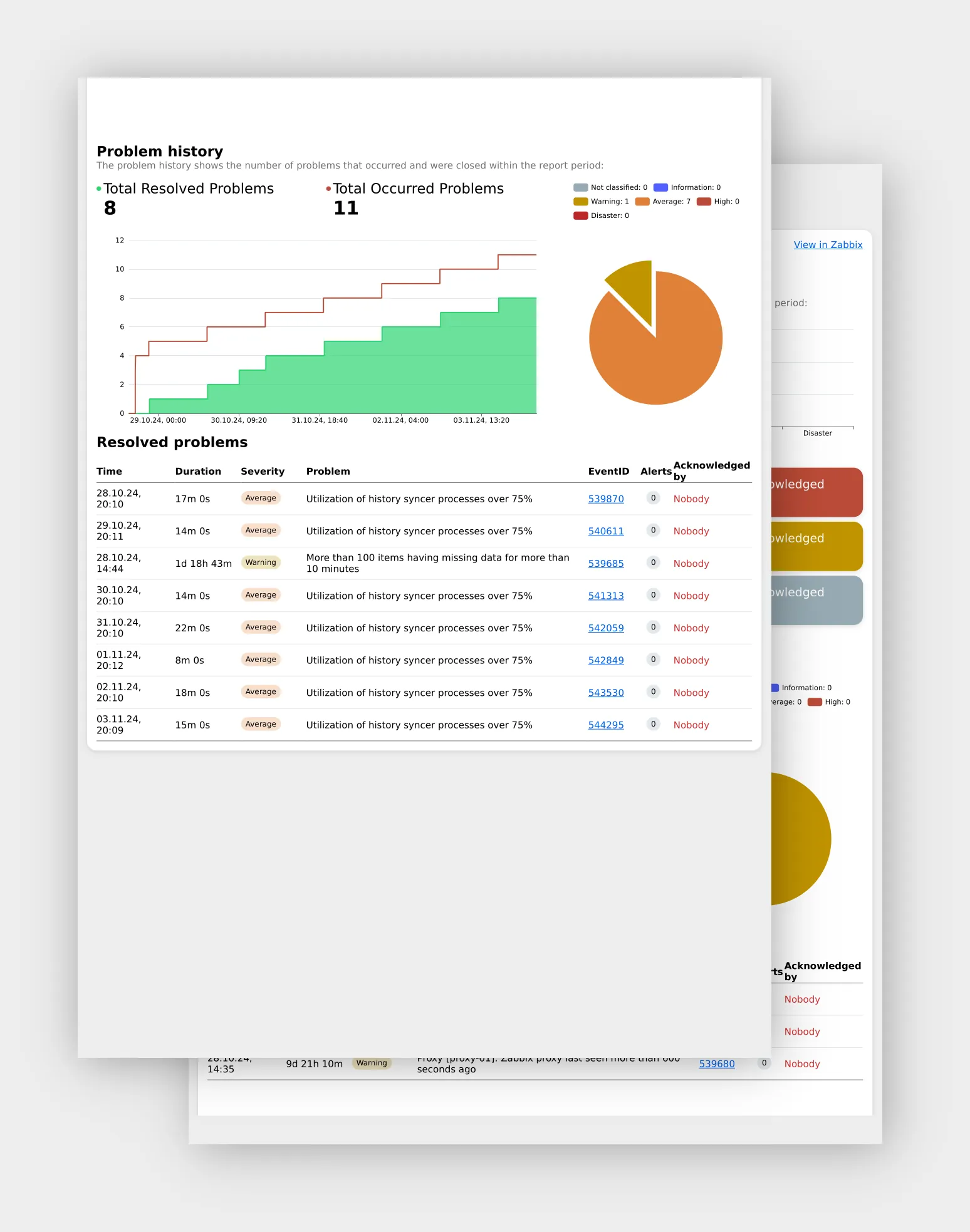
Deliver DataForge Reports to multiple destinations
Flexible delivery options
Subscribe to DataForge reports and get scheduled reports sent to your email address automatically. Or send reports to other servers with various protocols for easier further processing & automation.
- Email (configure your own email server)
- S3 upload (object storage)
- SCP upload (SSH)
- Kafka message queue
Matches multiple different use cases
Different render types
DataForge reports can be delivered in different formats.
This means that human-readable PDF reports can be created, as well as machine-readable reports in JSON, for example, for external processing.
These render types are currently supported:
- CSV (Excel)
- JSON
- XML
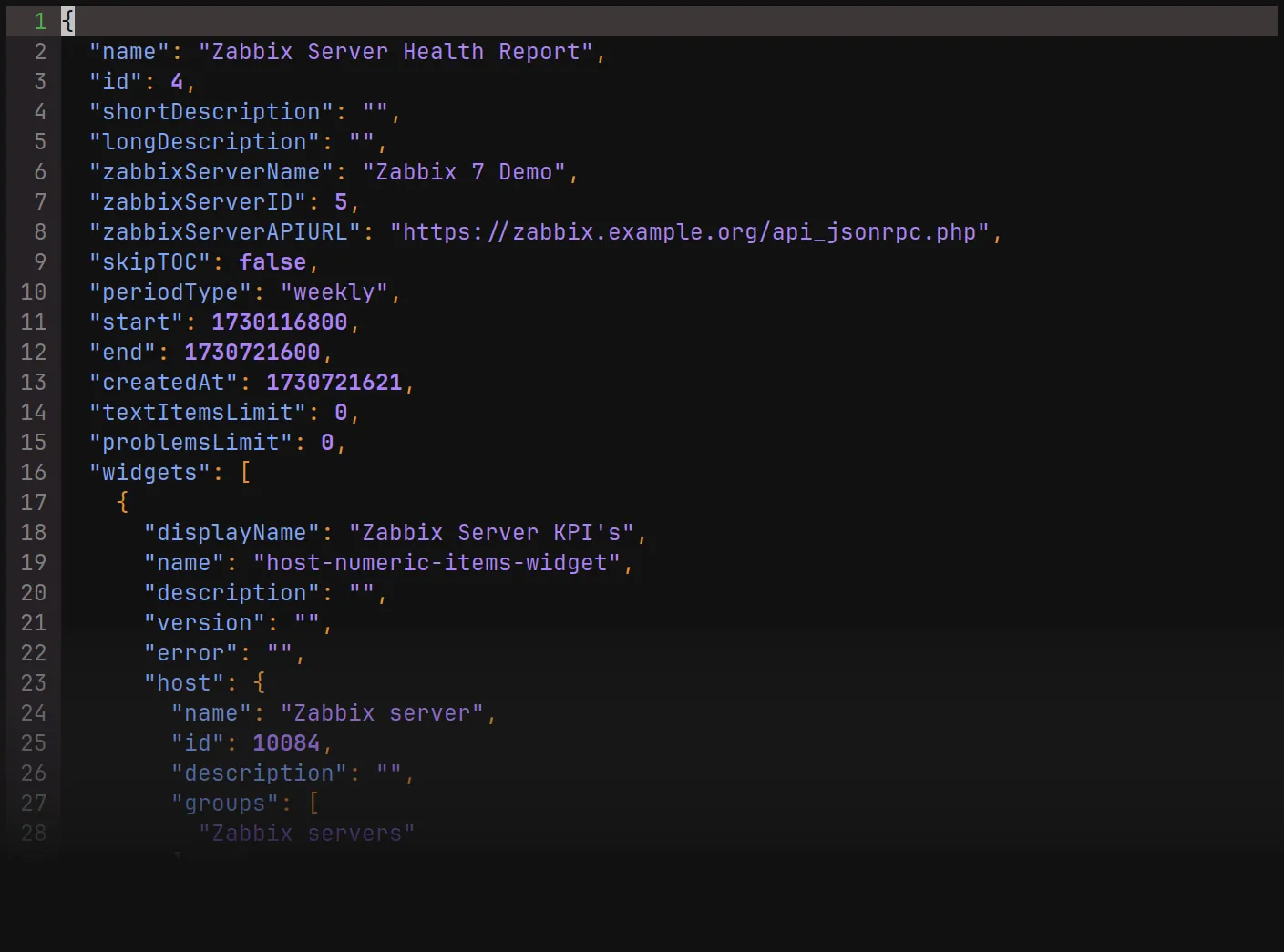
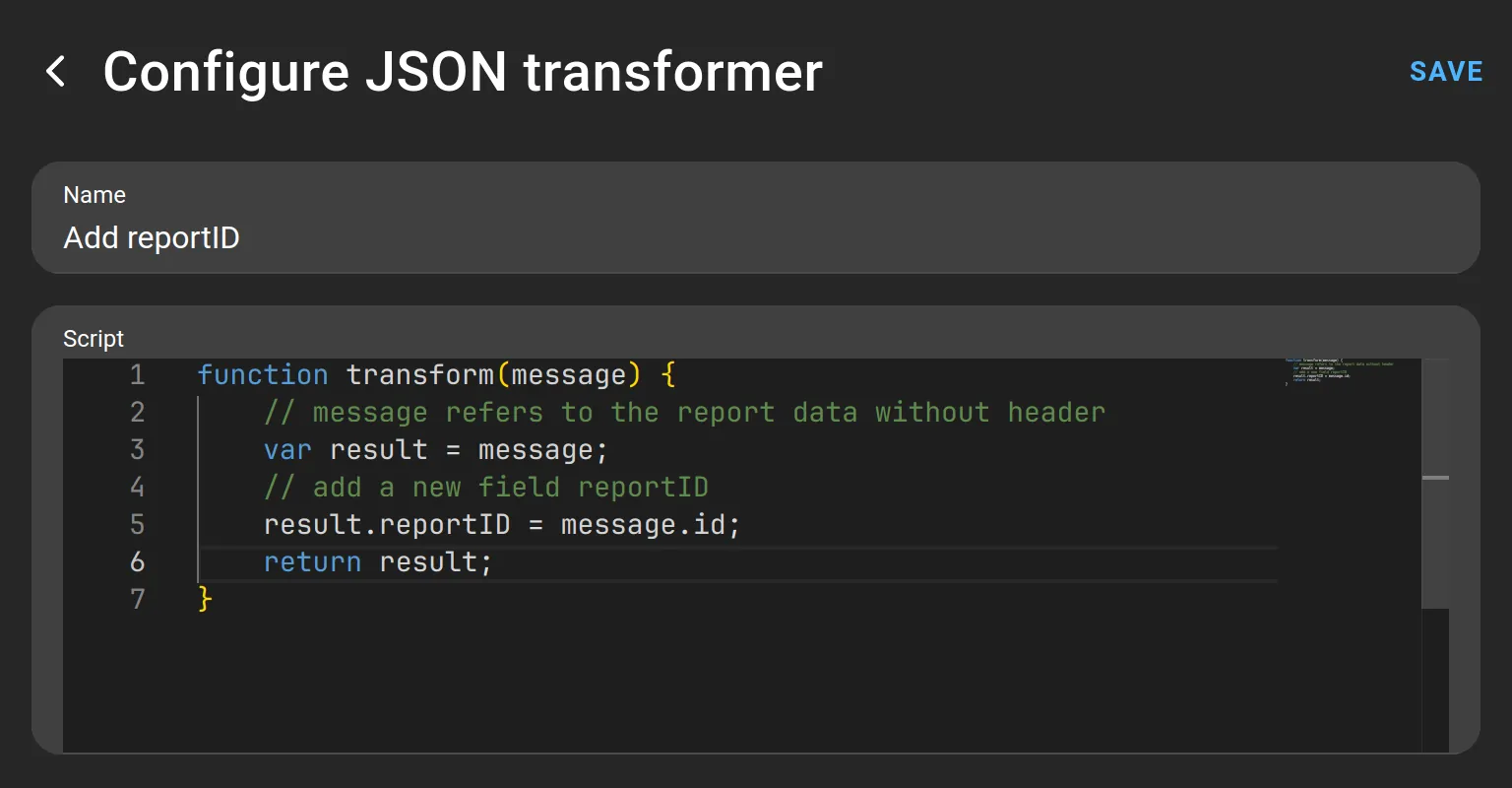
Modify reports prior to delivery
JSON transformers
Using our JSON transformers, you can modify your reports automatically using custom JavaScript and perform your own calculations and changes to the JSON report data, prior to further processing (such as PDF rendering) and report delivery.
The JavaScript code is executed in an isolated environment, so it can modify report data, but cannot for example send HTTP requests to another server.